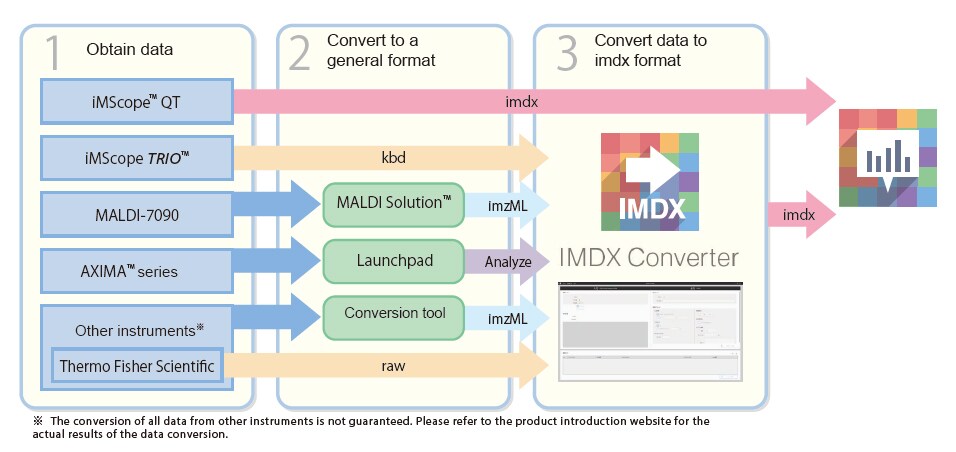IMAGEREVEAL MS Mass Spectrometry Imaging Data Analysis Software - Features
Mass Spectrometry Imaging Data Analysis Software
1. Processing in as few as 3 steps
"Collective Analysis" mode
Automatically obtain MS images with distinctive characteristics thanks to the "Collective Analysis" mode with pre-set parameters.
This is a highly convenient feature when you need to process a lot of data with similar parameters. The user can create data matrix tables from differential analysis and/or image analysis, carry out statistical data analysis, and obtain MS images all in one step.

Examples using "Collective Analysis"
Using the "Collective Analysis" mode, MS images where the NASH tissue shows peculiarities with respect to normal tissue are automatically selected.

2. Multiple analysis modes
Introducing an analysis of mouse liver for NASH (Non-Alcoholic Steatohepatitis) using 3 examples of analysis modes.
- 1. Finding molecules unique to NASH tissue (Differential Analysis)
- 2. Finding molecules with the same distribution as the stained image (Image Analysis)
- 3. Creating an MS image showing the concentration distribution of the target molecule (Quantitative Analysis)
What is NASH?
NASH (Non-Alcoholic Steatohepatitis) refers to one type of fatty liver disease that is not related to alcohol consumption.

1. Finding molecules unique to NASH tissue Differential Analysis
Using statistical methods and comparing the average spectra of the ROIs, IMAGEREVEAL MS users are able to find molecules that are causing the differences between the ROIs.

Further analysis can be carried out using the test functions, PLS (partial least squares) function, etc.
2. Finding molecules with the similar distribution as the stained image Image Analysis
Using statistical methods and comparing each m/z distribution, IMAGEREVEAL MS users are also able to find molecules with distinctive distributions.

Further data analysis can be carried out using "Image Classification", "Segmentation", etc.
3. Creating an MS image showing the concentration distribution of the target molecule Quantitative Analysis
Calibration curves are used to convert the intensity of the target molecule in the ROI into a concentration value.

3. Processing of general data formats
Data files can be converted to IMDX format readable by the IMAGEREVEAL MS using the included "IMDX Converter" tool.
The iMScope "kbd" format and general "Analyze 7.5" and "imzML" can be converted with this tool.

4. Other features
Target analysis / Non-target analysis
- Target analysis Analysis of only target m/z values based on a list of e.g. lipids or metabolites. It is also possible to create a custom list.
- Non-target analysis Analysis over all m/z within the specified MS range. Useful for checking which distinctive m/z values are contained within the range.
Compound list
This is a table containing information such as compound names, m/z values, and adduct ions. Compounds in the list can be associated with m/z values for MS image analysis.

Simultaneous processing of multiple MS Image data files
Up to a few hundred GBs of data can be processed at once, facilitating fast analysis and image comparison.


